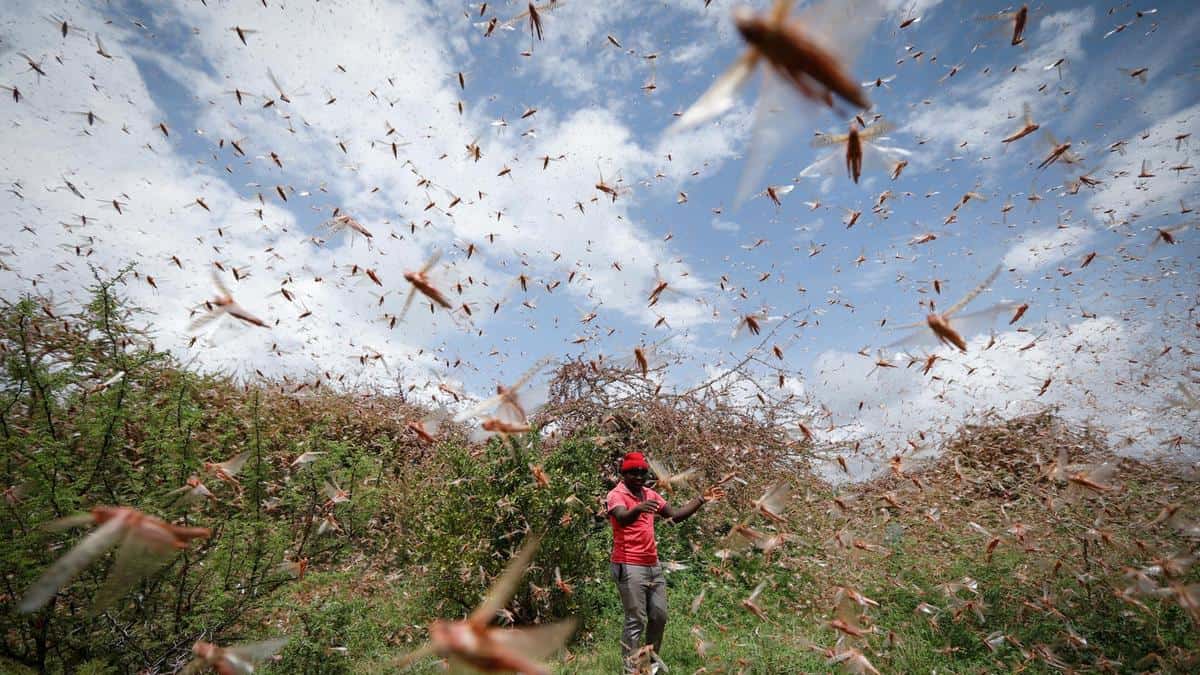The UN’s Food and Agriculture Organisation (FAO) has warned that an enormous swarm of locusts developing in the Horn of Africa is likely to threaten the Middle East and North Africa in the coming months.
According to the FAO, the upsurge in locust numbers has the potential to reach plague proportions and is the “worst desert locust crisis in over 25 years.” Despite efforts to control the outbreak, it has already spread to Iran, Sudan, and Yemen.
“The situation remains extremely alarming in the Horn of Africa, specifically Kenya, Ethiopia, and Somalia where widespread breeding is in progress and new swarms are starting to form, representing an unprecedented threat to food security and livelihoods at the beginning of the upcoming cropping season,” the FAO’s Locust Watch website said.
The Desert Locust situation update issued on March 17, said the developments in Kenya, Ethiopia, Yemen and Iran are very concerning, while the problem is relatively under control in Sudan, Eritrea, Egypt, Saudi Arabia, and Oman.
The spread of desert locusts to Yemen and Iran is particularly worrying for the MENA region due to the conflict in Yemen and the novel coronavirus catastrophe unfolding in Iran.
Locust Watch advises that, in Yemen, so-called “hopper bands” are still forming on the southern coast near Aden, although control was carried out in the area but, “the situation is not well known in other areas where breeding is likely underway.”
As for Iran, “swarms and adult groups continue laying eggs in the southwest (southern Khuzestan, Busherh, southern Fars, western Hormozgan provinces),” the update said.
Worrying hatching and band formation is imminent and “local breeding continues in the southeast where hoppers are forming groups and bands in eastern Hormozgan. Control operations are in progress,” the update went on.
The success and continuation of control efforts in Iran are seriously threatened by the COVID19 outbreak gripping the country. As of March 19, Iran had 17 361 confirmed cases of novel coronavirus and had recorded 1135 fatalities from the virus.
Once formed, ravenous swarms of desert locusts, considered the “most destructive migratory pest in the world” by Locust Watch, can move quickly, travelling up to 150km per day.
They are also capable of eating the equivalent of their bodyweight daily, and the swarm currently in the Horn is estimated to eat enough food to feed around 35 000 humans, on a daily basis.
The swarm is expected to arrive in the Middle East in April and spread as far east as Pakistan, The Weather Channel reports.
The growing band of desert locusts poses a frightening risk to the food security and lives of the region’s poorest and most vulnerable people.
“Persons living in poverty face compounding vulnerabilities to climate change impacts because they lack the resources to quickly recover from its effects. In this case, desert locusts are ravaging crops in the field before harvesting, wiping out livestock and wildlife feed, and with them savings, assets and livelihoods,” United Nations Environment Programme expert Richard Munang explained in a recent interview with The Weather Channel.

